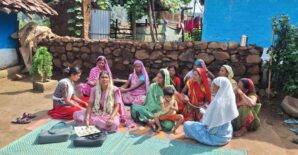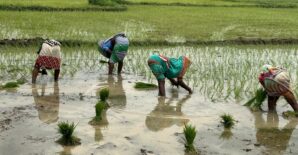Anyone familiar with South Asian cuisine knows that the key to its flavor are the spices – the masala, either whole or ground — often tempered in oil or clarified butter at the start of the cooking process. Similarly, well-designed gender research treats gender as an ingredient essential to the dish itself, not a topping or afterthought. But what does one do if a research program has begun, with uneven attention to gender issues? How can attention to gender be introduced at different stages and different parts of a research portfolio, where it makes the most sense? Just as different recipes call for different spices to create unique flavors, likewise, different research projects benefit from different degrees of focus on gender. In some contexts, gender may not be the key driver of inequality in diet, health, and nutrition outcomes, though it may intersect with other factors that contribute to marginalization, notably caste, class, and lifecycle stage. Thus, a research portfolio must have a coherent and strategic approach to integrating gender and social inclusion.
In this blog, we describe the process of embedding social inclusion and gender in the Transforming Agrifood Systems in South Asia Research (TAFSSA) portfolio. A CGIAR Regional Integrated Initiative, TAFSSA aims to deliver a coordinated program of research and engagement across the food production-to-consumption continuum to support equitable access to sustainable healthy diets, improve farmer livelihoods and resilience, and conserve land, air, and groundwater resources. Fully embedding the gender “spice” across the portfolio means finding the right mix of questions, methods, and tools for each Work Package (WP).
Integration of social inclusion and gender began in the initiative’s design phase to ensure that TAFSSA’s overall objectives are aligned with social inclusion and gender objectives, but the process of integrating these issues into TAFSSA’s WPs continued into the implementation phase. Once the initiative was funded, to further strengthen this integration of objectives, we began meeting with all the team leaders and researchers in each of the five WPs to introduce them to the conceptual framework that we would be using. We adopted the gender and food systems framework developed by Njuki et al. (2022)[i], which outlines the linkages between gender equality, women’s empowerment, and the food system, because of its direct relevance to TAFSSA. We also identified which parts of the framework would be most relevant to each of the WPs.
We then held meetings with the researchers from each WP so they could present their workplans and brainstorm how gender might be addressed. The WP leaders and researchers identified where they thought it would be strategic to address gender; we also helped identify research gaps as well as “low-hanging fruit” where integrating gender into their workplans would be relatively easy and fruitful. We recognized that it is important to be strategic and opportunistic when incorporating gender into an existing research portfolio. Blindly insisting on incorporating gender into all components of a project, without regard for its relevance, risks diluting researchers’ focus and reducing cooperation. Given the South Asian context, it was also impossible to address gender without also considering its interaction with caste and class; in some contexts, caste divisions were more binding than gender differences.
WP1 of TAFSSA aims to facilitate food systems transformation by building learning platforms, public data systems, and partnerships. For this WP, a strategic entry point for gender integration was the multi-site household survey that was fielded in study locations across South Asia. WP1 researchers themselves identified gender as a priority to incorporate into the survey. We recommended focusing strategically on the areas where we know less about gender differences, and so it’s quite important to collect gender-disaggregated data. Typically, survey modules on agricultural production are answered by the male household member. To ensure that men would not answer the bulk of the questionnaire and that women would be better represented, the survey could be rebalanced so that the woman answers some questions. Due to budgetary constraints, a comprehensive women’s empowerment module was not feasible. So, we suggested including questions on decision-making, mobility, support, and attitudes toward domestic violence that had been tested in previous surveys in the region.
Thus, working with the WP1 team, the gender team made recommendations on sampling (which household members and age groups to be sampled) and questionnaire modules, based on gaps identified in the data (including gender data gaps). One key area where data are scarce is on time use of men, women, and adolescents. The WP1 and WP4 teams worked together to create a novel tool which will generate data to get a comprehensive picture of task allocation by gender and age.
In WP2, transforming agroecosystems to boost income and diversified food production, researchers identified key areas where a gender perspective would be important: (1) the choice of crops for diversification, in terms of consumption and importance for nutrition, and (2) labor and cultivation requirements. One researcher pointed to the important role of livestock in diversification and women’s important role in livestock production. Researchers found that most agricultural decisions were made by men, but decision-making power was nuanced. Speaking with women separately was crucial for obtaining their perspectives. To this end, the research teams ensured equal participation of both men and women (from the same household) during nutrition trainings and also had a pair of facilitators (one man and one woman) to encourage women to actively participate. They also encouraged women’s participation when doing agricultural trainings. In addition, WP2 researchers highlighted the need to consider intrahousehold dynamics in relation to women’s status within the family, as well as the caste system.
For WP3, evidence and actions boosting access to sustainably produced, healthy diets, discussions with the WP team focused on how to better understand the role of gender as a commodity moves from the farm to the plate. How do gender differences in access and affordability interact with food environments? What factors in the food environment influence access to and purchase of nutritious food for poor consumers — with emphasis on women — and how can these environments be improved? While understanding of gender in agricultural production is quite advanced, understanding of its role in processing and marketing is more limited. Often, there are barriers to women’s entry in these downstream nodes of the value chain, and these barriers are also mediated by caste and class. WP3 researchers expressed interest in learning more about gender in smallholder farmer aggregation models (such as marketing cooperatives or farmer organizations), sustainability across the value chain, and food environments and markets.
The gender team is housed in WP4, behavioural determinants of sustainable healthy diets. To better understand the intrahousehold dynamics around diets, the WP4 team developed a framework that outlines the steps involved in food preparation and consumption within the household. These steps — which include decisions around the types of food to purchase and/or produce, the act of purchasing, and then the process of cooking, serving, and consuming — are highly context-specific and gendered. This exercise led the team to design a novel tool that examines the distribution of tasks related to the agrifood system within the household. Additionally, we took advantage of a workshop on drivers of food choice in Dhaka to brainstorm ideas around topics related to gender that could be analyzed using the integrated household survey and other data sets.
Finally, in WP5, building resilience to climate change and mitigating environmental degradation, team members talked about the differential impact of climate shocks, the gendered access and use of both irrigation and household water, the tools that can be used to build climate resilience, and expanding gender-equitable access to weather information or mechanisms such as weather insurance to insure against risk. For a groundwater-energy nexus survey on irrigation markets in Bangladesh, a module on gender was included to improve understanding of gender-irrigation linkages. This module disaggregated several decision-making elements and activities related to groundwater irrigation.
In conducting the review of all WPs, we learned where gender and social inclusion can be strategically incorporated in the existing work program and where it could be intentionally included in future work. Additionally, we found that gender and social inclusion, as a cross-cutting theme, can provide opportunities for different WPs to work together. However, we also found that a set of protocols or methods is needed that can be used throughout WPs in different countries to ask the questions that we’ve been raising about social inclusion. Looking ahead, we could design a set of protocols for different types of groups (men and women, castes, etc.) for use throughout TAFSSA’s gender work, with adaptations to the specific country contexts. Using the same set of protocols across countries and WPs would facilitate comparison.
Taking a comprehensive view of the WPs can facilitate the integration of gender and social inclusion in a strategic and balanced fashion that makes sense for the whole initiative. Much as different dishes complement each other in a thali, playing to each WP’s strengths and distinct flavors is key to successful integration of gender and social inclusion in TAFSSA.
[i] Njuki J, Eissler S, Malapit H, Meinzen-Dick R, Bryan E, Quisumbing A. A review of evidence on gender equality, women’s empowerment, and food systems. Glob Food Sec. 2022 Jun 1;33. Available from: https://doi.org/10.1016/j.gfs.2022.100622
Image credits: Abdul Momin
Neha Kumar is a Senior Research Fellow in IFPRI’s Nutrition, Diets, and Health Unit, and Agnes Quisumbing is a Senior Research Fellow in the Poverty, Gender and Inclusion Unit



